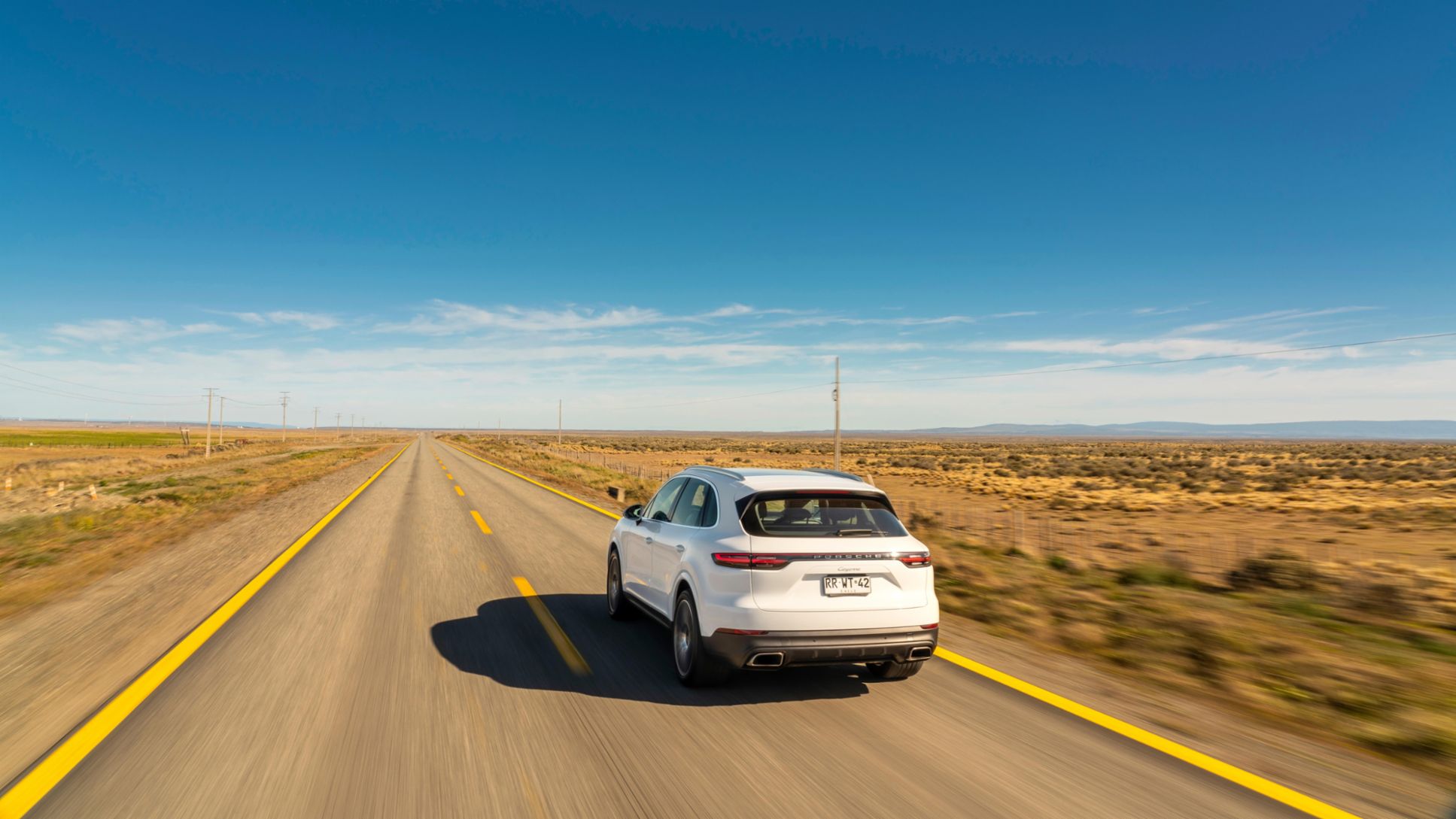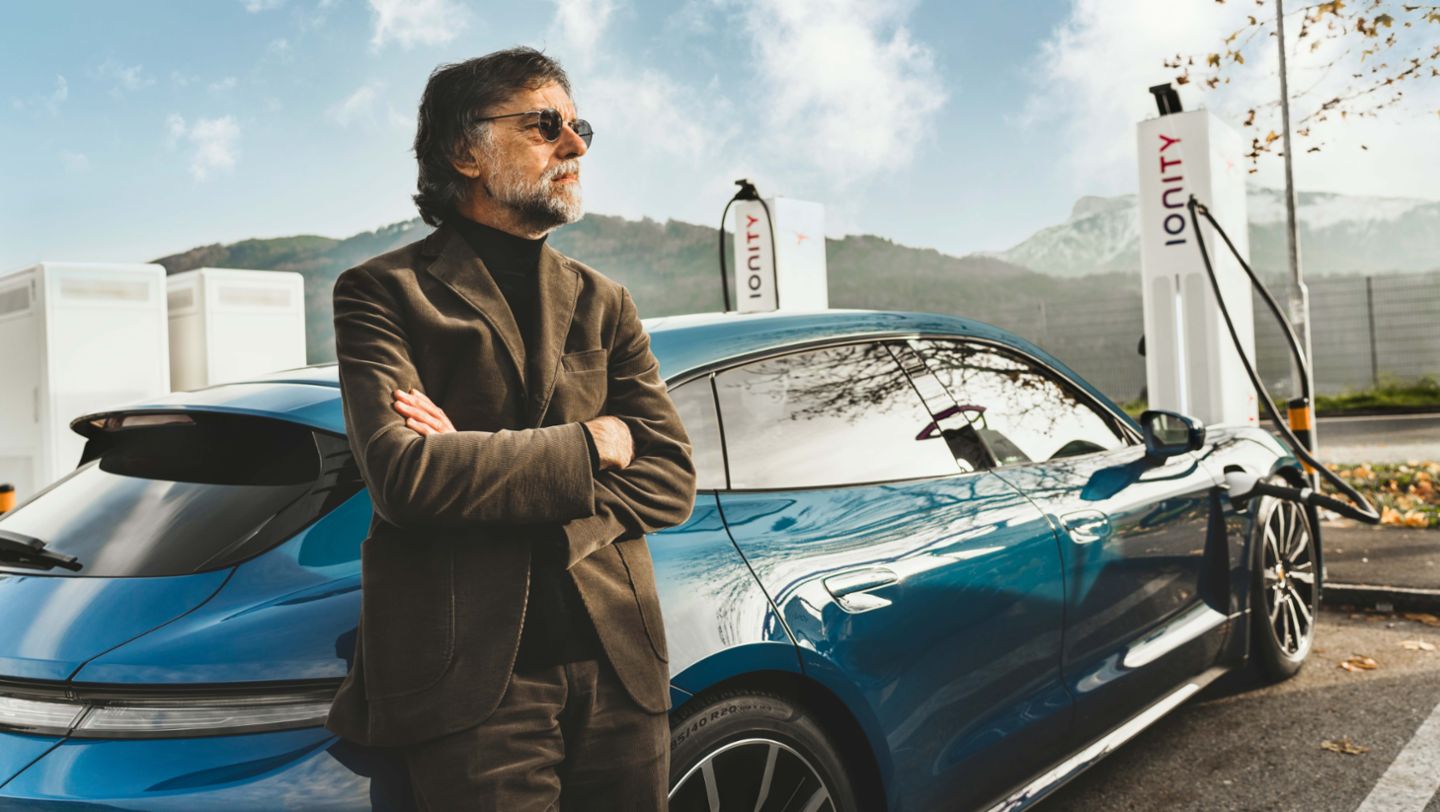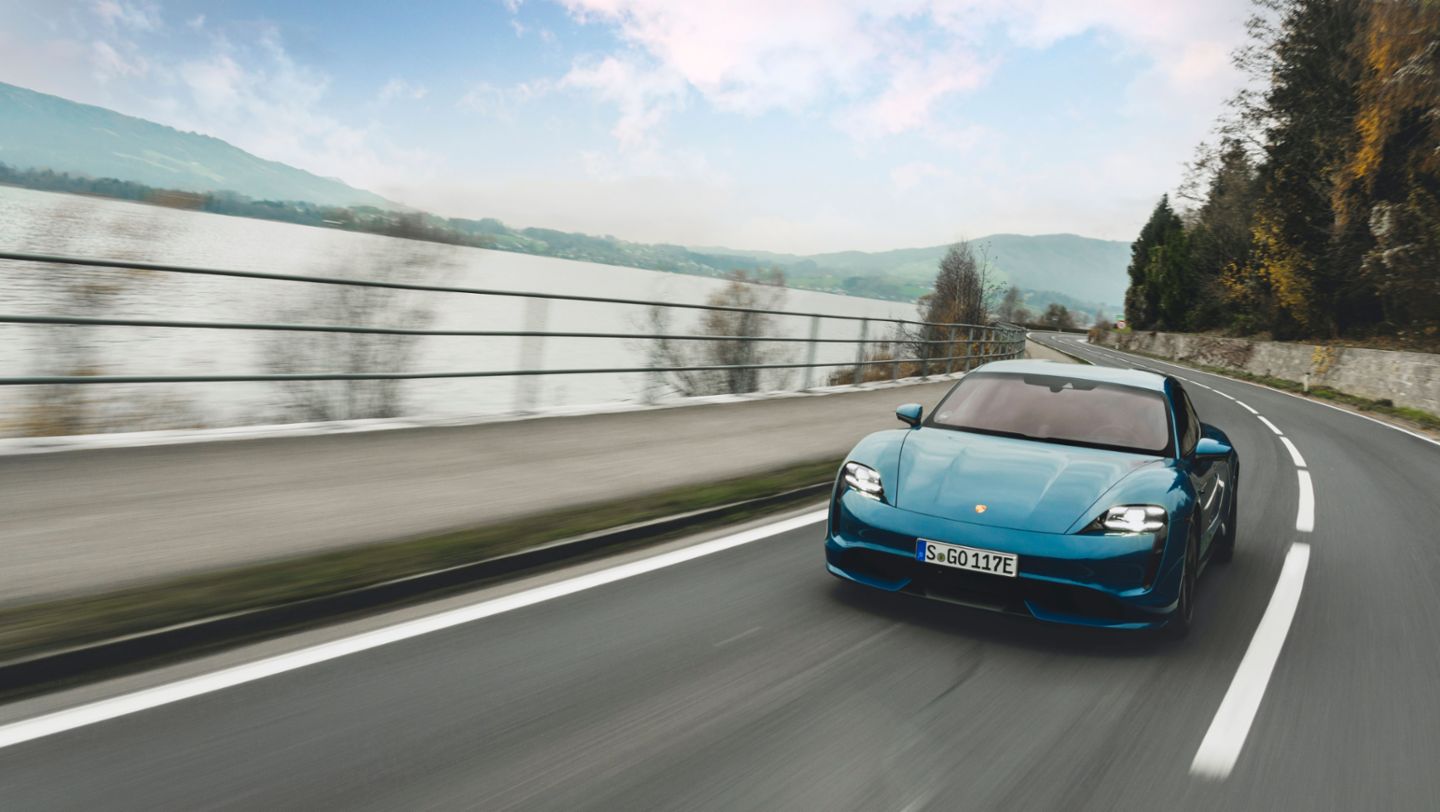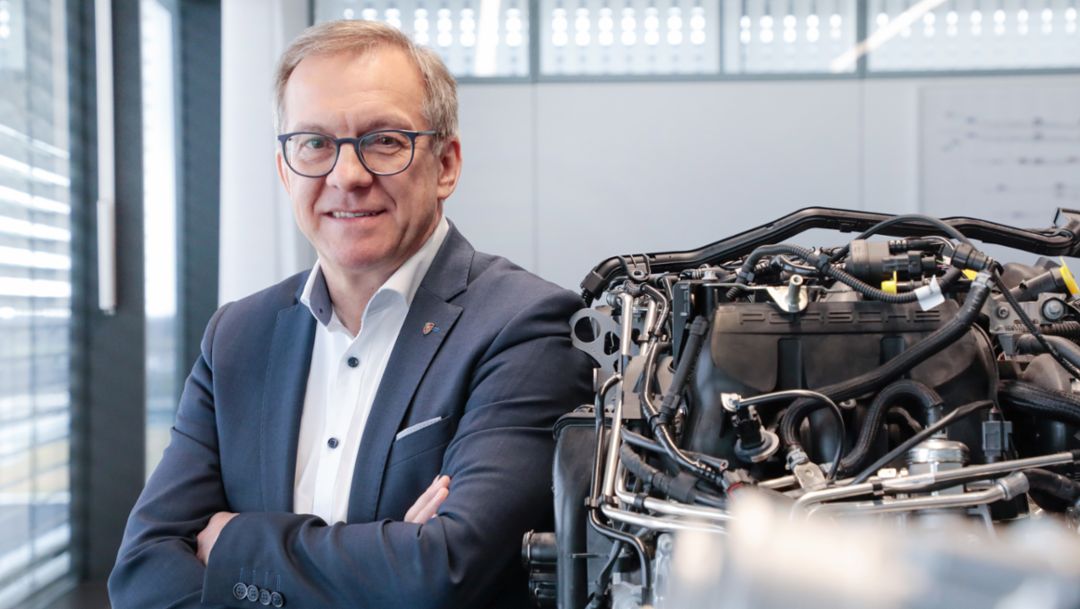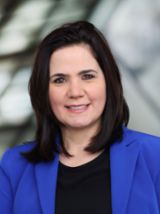Porsche engineer Otmar Bitsche knows the A 1, A 8, A 9, and A 99 superhighways like the back of his hand, as he drives his Taycan Turbo Sport Turismo from the Weissach Development Centre to his family’s home in Graz, Austria, every weekend. Friday there and Sunday back, for nearly 1,350 kilometers in the all-electric vehicle. A new generation of commuter.
670 km, 6:17 h, 166 kWh
It’s Friday afternoon and the 65-year-old has relocated his office to his car before the onslaught of rush hour traffic. He spends the first two and a half hours of driving on the phone, as the Alps begin to take shape on the horizon. At 150 km/h, tire and wind sounds are audible in the background and mix with the humming of the electric motors, creating a futuristic soundscape.
It’s this special sound that has accompanied Bitsche for decades. When he joined Porsche in 2012 and took charge of electric mobility, he’d already developed all-electric compact cars and the first series hybrid vehicle with lithiumion battery. “At Porsche, we’re not interested in breaking range records,” emphasizes the Austrian, who has helped to shape the sports car manufacturer’s philosophy. “What matters most when it comes to an electric car’s suitability for longer distances is the travel time. And like battery capacity and performance, chargeability also plays a key role.”
Mondsee lake behind Salzburg offers an idyllic landscape alongside the motorway. Six IONITY HPC stations are located between the guardrails and the Drachenwand cliff. Bitsche’s charging stop takes a good 20 minutes with up to 270 kilowatts. The developer prefers to use the Porsche Charging Planner. “I know all the charging points along this route, of course. But for me it’s more about preconditioning the battery for the charging process,” he explains. “20 to 25 degrees Celsius is ideal for fast charging.”
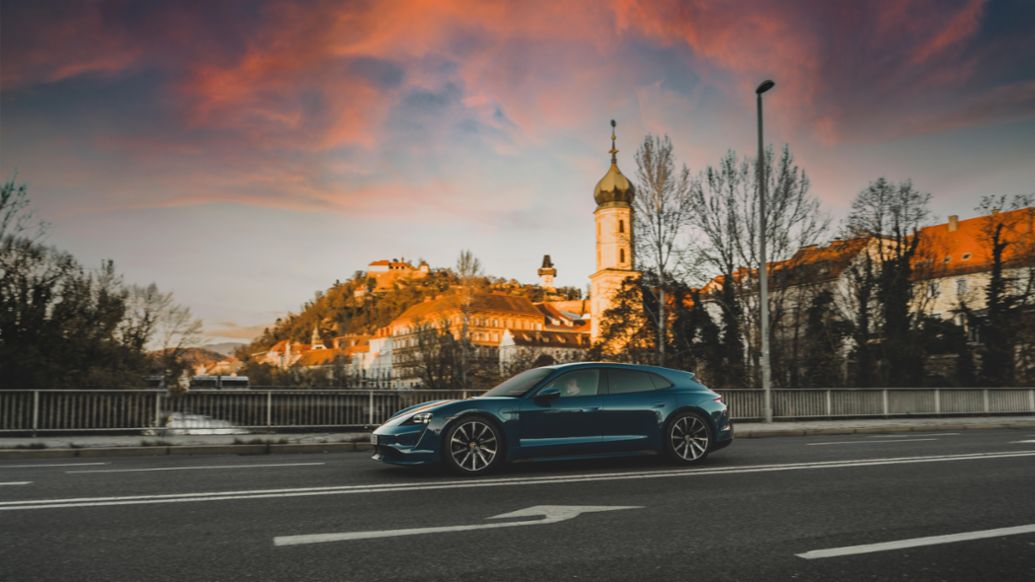
Things were very different even just a few years ago. There were hardly any electric cars on the road and not many fast-charging stations along the superhighway. But that has changed visibly. Since 2017, IONITY alone has installed a good 450 charging hubs with more than 2,000 charging stations in 24 European countries. “The number of electric cars in Germany is growing faster than the charging infrastructure,” says Bitsche, emphasizing the need for further expansion.
Electric mobility is becoming more and more common in people’s everyday lives, which is clear to see at Porsche. Over the past three years since production of the Taycan Turbo Sport Turismo kicked off in September 2019, the sports car manufacturer has produced more than 100,000 all-electric vehicles. Bitsche and his colleagues have also been working on future electric models for some time now. The company’s aim is to ensure that around half of all newly sold Porsche vehicles are electric by 2025. The share of all new vehicles with an all-electric drive should exceed 80 percent by 2030.
Time for electric mobility
Bitsche always keeps an eye on the time and reaches the Graz city center in his Taycan Turbo Sport Turismo just before sunset, passing the iconic clock tower rising high above the rooftops in the old town. After a good six hours, 670 kilometers, and two charging stops, the Porsche engineer has reached his destination. He chooses his favorite music for this moment, The Well-Tempered Clavier by Johann Sebastian Bach. “I may have arrived half an hour sooner with an internal combustion engine,” says Bitsche, pondering. “But the drive wouldn’t have been this quiet and relaxing. It’s high time for electric mobility.”
Arrival at Long Last
Barbara Frenkel and Karl Dums have been airborne for nearly 24 hours, having flown to the other side of the world, and have landed safely at Aeropuerto Internacional Presidente Carlos Ibáñez del Campo, as the airport is officially called. It’s December and Christmas is just around the corner.
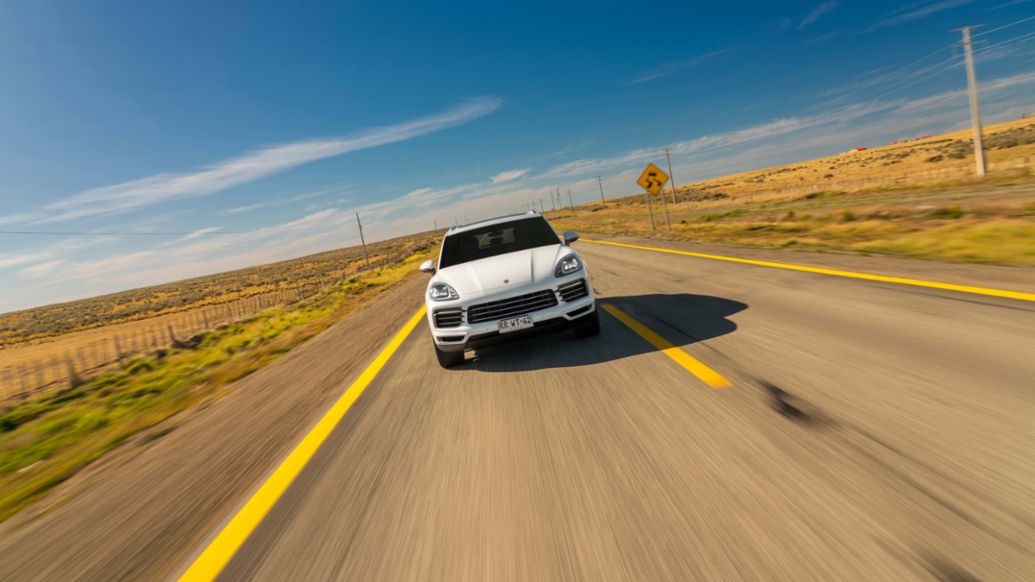
Frenkel and Dums are on their way to the world’s southernmost city, Punta Arenas, in close proximity to Tierra del Fuego, the legendary group of islands. Here in Chilean Patagonia, 14,000 kilometers from Stuttgart, the Strait of Magellan connects the Atlantic with the Pacific, which is also why Punta Arenas is often used as a starting point for expeditions through the surrounding wilderness and Antarctica.
But that’s not the reason for the Porsche employees’ long journey. They’re interested in construction of the Haru Oni eFuel pilot facility, which Porsche initiated with partners in Punta Arenas. In the local dialect, the name means “land of the winds.” The region is known for its constant winds, which blow 270 days a year, enabling wind turbines to operate at full capacity. These are ideal conditions. As Porsche would like to demonstrate, with international partners such as Siemens Energy, Enel, and ExxonMobil, that water and air can be transformed into synthetic petrol with renewable wind power. And it’s a process that is potentially close to carbon-neutral. It will be proven here that the entire process chain can be integrated into a single system. The project was developed under the direction of Michael Steiner in the Porsche development division.
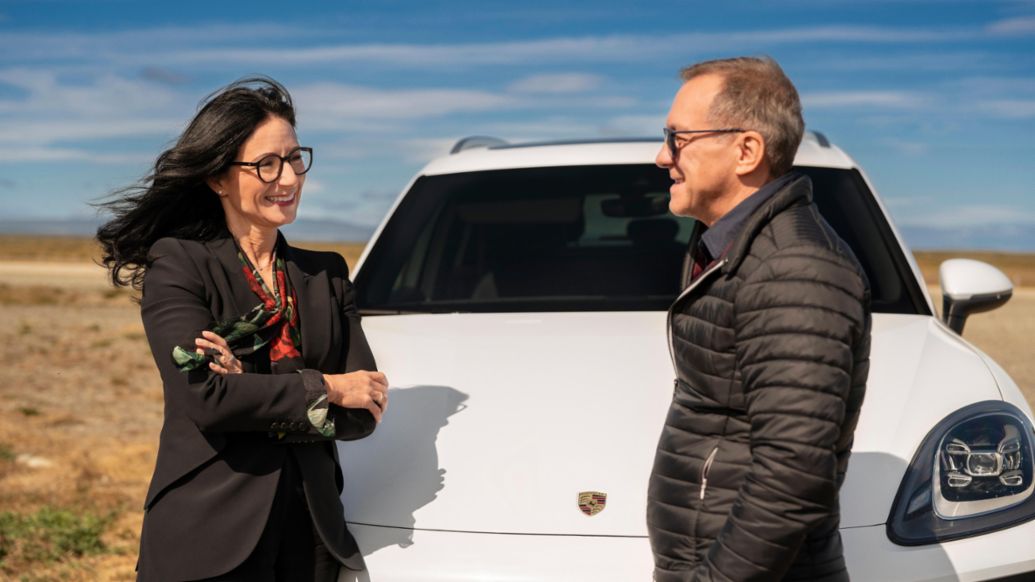
“eFuels are a sensible addition to electromobility,” emphasizes Frenkel, Member of the Executive Board responsible for Procurement. “After all, there are more than 1.3 billion vehicles with an internal combustion engine worldwide.” As the force behind the company’s sustainability strategy, Frenkel fights for innovative forms of energy such as eFuels. Employees in her division have been working with developers since the project got started three years ago. As a fuel expert, engineer Dums has also been involved since the very start and even helped plan the plant from scratch.
They spoke to the technicians of Highly Innovative Fuels (HIF), the Chilean general contractor, many times via video conference, developing schedules, planning budgets, and resolving various technical issues. “With a pioneering spirit and with heart and soul,” says Frenkel. “The pilot phase is underway. With initial scaling, the project will likely reach more than 50 million liters per year by the middle of the decade.”
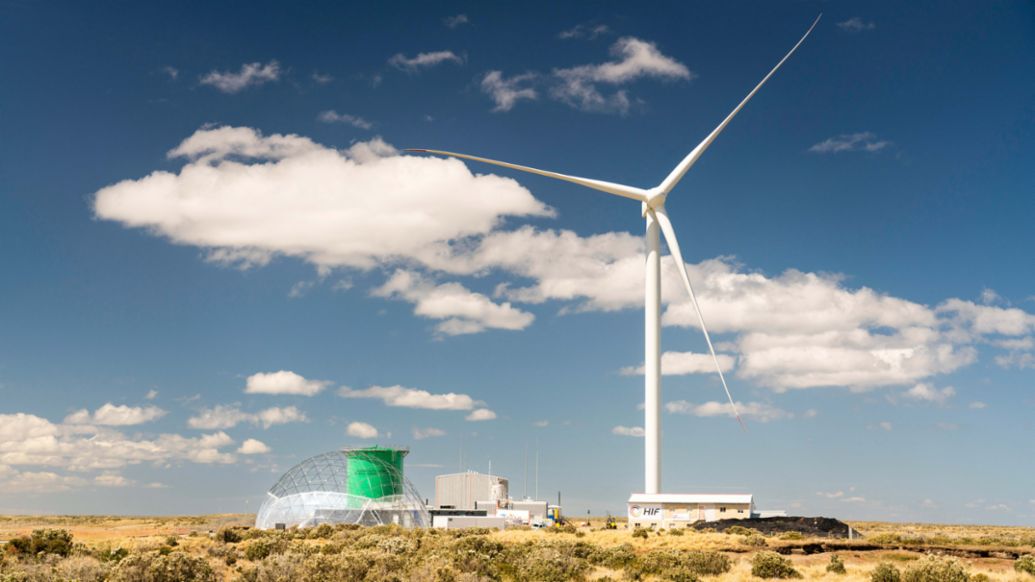
The Porsche duo have just left the airport and are now driving the Porsche Cayenne down the single-lane Autopista del Coral, with no other cars as far as the eye can see. Windblown cypresses line the edge of the road, with grazing sheep occasionally visible off to the side. The wind howls incessantly, and Frenkel needs to hold tight to the steering wheel as gusts of wind push up against the car. And so they drive on towards the horizon for a distance of 30 kilometers.
A “Planta Haru Oni” sign suddenly appears out of nowhere, and Frenkel turns right at the fork. A large, white wind turbine 100 meters tall comes into view, its rotor turning at a fast pace. It’s surrounded by a group of grey halls containing cutting-edge electrolysis systems that transform water into hydrogen. In combination with CO₂, this hydrogen is used to produce synthetic methanol and then naphtha.
Frenkel and Dums could fill their Cayenne with the refined petrol, but that’s not what they’re thinking about at that moment. They gaze at the plant before them. The sky is bright blue, but the wind is cold. Although it’s summer in the southern hemisphere, temperatures rarely exceed 15 degrees Celsius in Punta Arenas.
“It’s taken us three years to get to this point — so we can produce fuel that’s potentially close to carbon-neutral. It’s wonderful to see that it works.” Dums remembers the first time the team discussed the idea of producing eFuel in 2019. By the time the vision began to slowly take shape and the construction team was selected, they had spoken to more than 60 potential partners. “I was always confident that we’d get it done,” says Dums. “Technologically speaking, we were breaking new ground, which motivated us and brought us closer together as a team.”
César Norton, President of HIF, entered the picture at that time. His team coordinated construction and got the eFuel plant up and running. “Bienvenidos, amigos,” he calls out cheerfully to Frenkel and Dums, they smile back at him — they have finally arrived at the Haru Oni plant. The idea has actually become a reality.
The Porsche E-Strategy
Ambition
The share of all new Porsche vehicles with an all-electric drive should exceed 80 percent by 2030.
Powerhouse
Batteries are the combustion chamber of the future. With the majority stake in the Cellforce Group, Porsche will be manufacturing high-performance batteries.
Energy
Fast driving, fast charging. Porsche plans to offer comfortable, sporty driving thanks to well-developed charging options — with up to 270 kW and convenience at its own charging hubs.
Basis
Porsche will be expanding its portfolio to two platforms in the future: Premium Platform Electric (PPE) and Scalable Solutions Platform (SSP).
Info
Text first published in the Annual & Sustainability Report 2022.
